Every once in a while a technology is introduced
that transforms the landscape of health care. Low
Level Laser Therapy is a perfect example of such
a development. It is well accepted, painless and,
bottom line, it gets results.
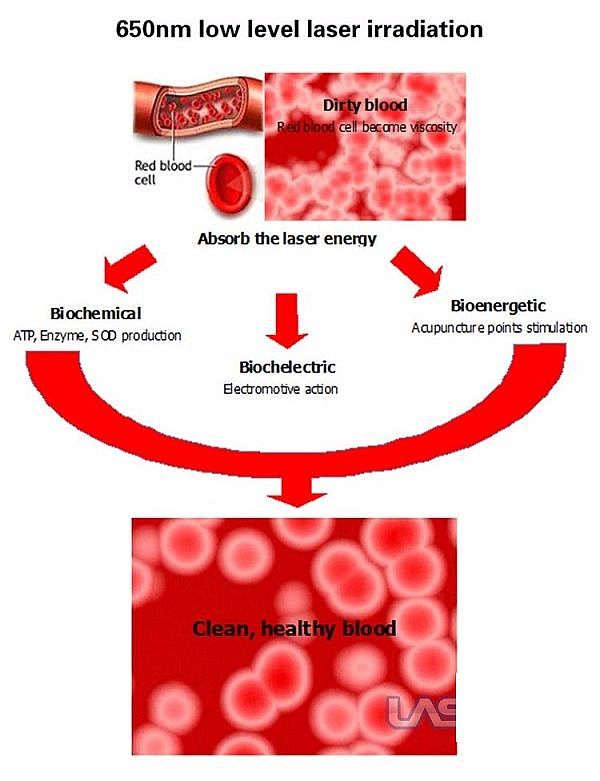
Low Level Laser Therapy involves
applying a "low" energy or "low
level" laser to tissue in order to stimulate
cellular processes and enhance biochemical reactions.
Low-intensity radiation in the red and infrared
spectral ranges induces certain changes in the
body,these play an important role in achieving
the clinical therapeutic effects of this device.
The most important of these effects is improved blood micro-circulation
, which further enhances the therapeutic effect of the low-level
laser therapy device. The biological effect is due to the dilating
of small blood vessels, a decrease in the adhesive ability of blood
cells, and aiding in the formation of new micro-vessels.
You may have a smooth unwrinkled skin
but do you have that spring in your step
that carries
you easily up a flight of stairs? You may
have six by six eye-sight and a slim figure
but
do you have the agility and flexibility to
jump up and answer the door when you are
spread out on the couch? If you don’t, then
you may be young in years, but not in your
heart. Those with strong, young hearts can
do all the above things, and much more. That
is why they have a young heart in the first
place. ‘The process of blockage of arteries
starts at birth, but the speed at which happens
depends a great deal on our energy expenditure,
besides the genes and diet,’ says Dr.
Shantesh Kaushik, cardiothoracic and vascular
surgeon. So you may be just thirty years
old, but your heart may be much older…
The terrifying reality is that as long
as we don’t go into fifth gear, we may never
know that there is a problem with our heart,
not unless we go in for diagnostic tests, as
arteries get blocked gradually. Dr. A.V. Ganesh
Kumar, Chief Interventional Cardiologist at
Hiranandani Hospital says, ‘The heart
has to pump more blood during exertion or some
emotional upset, and this can cause a heart
attack.’ There may be no warning signs
before this, not as long as we are cruising
along in second gear. ‘If the patient
has breathlessness and fatigue, these are signs
that it’s already late, that the blockage
has progressed to an advanced stage,’ says
Dr. Kaushik. |
Treatment: high blood fat, high blood glutinosity,
hypertension, coronary heart problems, angina,
myocardial infarction, atheroma, etc.
Recovering: the sequelas of cardiovascular & cerebrovascular
diseases, such as, aphemia, hemiplegia, anaesthesia, etc.
Improvement: headache, dizzy , heart-throb,breathe hard, weak,
etc.
Modulation: endocrinopathy, such as, diabetes, etc.
Diseases of nervous system and endocrine system:
Diseases of respiratory system: allergic rhinitis,
pneumal infection, etc
Diseases of digestive system: gastric ulcer, chronic gastroenteritis
Bacteria, Parasites etc
In addition, low-intensity radiation has a positive
influence on the quantity and quality of the immune
system, leading to increased destruction of bacteria.
Laser Blood Cleaner
Used in Asia to Treat And Prevent Vascular Diseases
Laser Blood Cleaner, which is used in Asia to
help with cardiovascular & encephalovascular
disease, diabetes, and any other diseases related
to blood.
Feature of the Laser Blood Cleaner uses low strength
laser radiation of 650nm wavelength, which can
be absorbed by blood through nasal mucous membrane,or
the wrist...
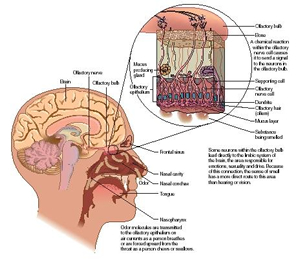
3. Low strength laser of 650nm wavelength absorbed
by blood can make the extra fat wrapping around
the RBC(red blood cell) lower.
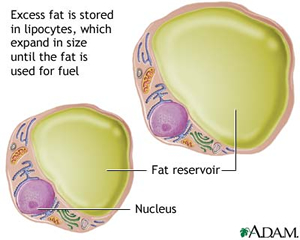
As the result the RBC(red blood cell) is released

!. So the electriferous power of RBC
(red blood cell) recovers, and its absorption
of Oxygen improves. The supply of oxygen in the
body improves at the same time,
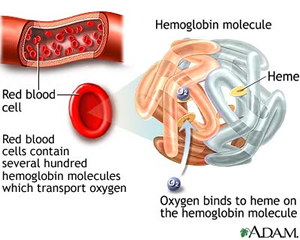
4. Blood lasers with low strength laser of 650nm
walvelength can activate the sympathetic nerve
and the vice-sympathetic nerve fibres, so the circulation
of blood in the brain and all over the body will
be improved .
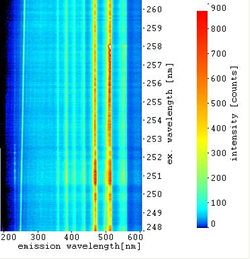
5. Besides, Low strength laser of 650nm wavelength
can correct the abnormal metabolism of fat, keeping
the balance of fat levels and the proportion of
cholesterol and lecithoid (resembling lecithin)
So, with the function of Blood laser, cardiovascular & encephalovascular
irregularities, diabetes, and any other dis-eases
related to blood may be helped.
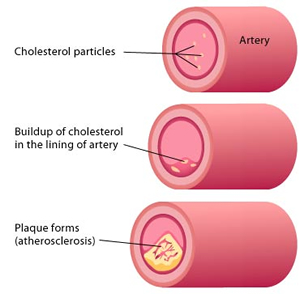
Technical Stuff
Laser Blood Cleaner applies low-intensity
laser with the wavelength of 650nm to irradiate
the nasal cavity and inject monochromatic
photons of low-intensity into blood to
increase the amount of enzymes in blood
used for dissolving the fat layer and cholesterol
such as lipoproteinase ,cholesterol transferase
etc, there fore, the fat layer wrapping
around the erythrocyte is shucked out of,
thereby, the ventilation ability of the
erythrocyte is recovered and the oxygen-carrying
function is improved.
Meanwhile, the negative charges on erythrocyte surface are
recovered because the surface layer wrapping around the erythrocyte
is shucked off, thus ,the repulsive force between each two
erythrocytes increases, so the erythrocytes that originally
accumulated in mass. disperse apart. This can also change
the molecule configuration of the protein in blood such as
enzyme and other functional proteins, then, a series of biological
effects will occur in the body through photochemical reaction
of energy exchange. After the nasal cavity is irradiated
on by laser, the blood vessels of nasal mucous membrane will
constrict and expand due to the stimulation to the sympathetic
and parasympathetic nerves, thus, leading to the improvement
of encephalic blood circulation and that of the whole body
reflectively
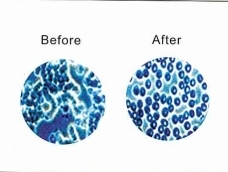

|
Blood Fats
Fat is a source of energy. It carries some vitamins around the
body. It is used to make hormones and cell membranes, to protect
organs and to lubricate some moving body parts. However, too
much fat in the blood increases the risk of heart disease or
pancreatitis.
Excess body fat is linked to major physical
threats like heart disease, cancer, and diabetes.
(Three out of four prople die of either heart
disease or cancer each year; according to
the National Health and Nutrition Examination
survey, approximately 80 percent of those
deaths are associated with life-style factors,
including inactivity.) |
Triglycerides are the most common
form of fat in the body. Cholesterol is another
form of fat. In order for fats to be carried in
the blood, they are wrapped in protein molecules.
These bundles of protein-wrapped fat are called
lipoproteins.
Lipoproteins come in different sizes. Smaller
ones are called low-density lipoproteins (LDL)
or very-low-density lipoproteins (VLDL). These
molecules carry fats from the liver to other parts
of the body. Too much LDL or VLDL can cause fat
to build up on the walls of your arteries. This
can reduce the oxygen supply to your heart muscle
and cause heart disease or a heart attack.
"Obese
people also tend to have high cholesterol
levels, making them more prone to arteriosclerosis,
a narrowing of the arteries by deposits
of plaque. This becomes life-threatening
when blood vessels become so narrow or
blocked that vital organs like the brain,
heart or kidneys are deprived of blood.
Additionally, the narrowing of the blood
vessels forces the heart to pump harder,
and blood pressure rises. High blood
pressure itself poses several health
risks, including
heart attack, kidney failure, and stroke.
About 25 percent of all heart and blood
vessel problems are associated with obesity. " Who
is obese? |
Larger lipoproteins are called high-density
lipoproteins (HDL). These are called "good" lipoproteins
because they remove fats from your arteries and
return them to the liver for more processing. High
levels of HDL seem to protect people from heart
disease.
Blood fats are measured as the amount (in milligrams)
contained in one tenth of a liter (a deciliter)
of blood, or mg/dL.

Cholesterol is
a waxy, fat-like material that is found in all
parts of the body.
It comes from two sources: our liver produces it, and we consume
it in meat
and dairy products, if elevated in the blood, it has been associated
with heart disease.
Risks: High
levels of fat are associated with disorders such
as arteriosclerosis, atherosclerosis, heart attack
and stroke.
Total Cholesterol: A
high cholesterol in
the blood is a major risk factor for heart and
blood vessel disease. Cholesterol in itself is
not all bad, in fact, our bodies need a certain
amount of this substance to function properly.
However, when the level gets too high, vascular
disease can result. A total cholesterol of less
than 200, and an LDL Cholesterol of 100 or less
is considered optimal by the National Heart, Lung,
and Blood Institute. The levels that your doctor
will recommend depend upon whether you are at high
risk for cardiovascular disease.
As the level of blood cholesterol
increases, so does the possibility of plugging
the arteries due to cholesterol plaque build-up.
Such a disease process is called "hardening
of the arteries" or atherosclerosis. When
the arteries feeding the heart become plugged,
a heart attack may occur. If the arteries that
go to the brain are affected, then the result is
a stroke.
There are three major kinds of cholesterol, High
Density Lipoprotein (HDL) , Low Density Lipoprotein
(LDL), and Very Low Density Lipoprotein (VLDL).
 |
When discussing insulin
sensitivity Robb Wolf discussed something
he called "The
Deadly Quartet". "The Deadly Quartet" consisted
of 1) Abdominal Fat 2) High Blood Glucose 3)
High Triglycerides 4) High Blood Pressure 5)
Inflammation. These five factors play a huge
role in insulin sensitivity and the problems
facing many Americans today. We find the storing
of abdominal fat or adipose fat is function
of inflammation, horomonal issues and high
insulin levels. High blood glucose levels stem
from an over-abundance of carbohydrates that
cause blood glucose levels to be high. High
triglycerides are related to extra insulin
that can not enter the cell. High blood pressure
and Inflammation. All these factors related
to insulin sensitivity are deadly and are related
to the consumption of carb rich meals. |
LDL Cholesterol is considered "bad
cholesterol" because cholesterol deposits
form in the arteries when LDL levels are high.
An LDL level of less than 130 is recommended, 100
is optimal, values greater than 160 are considered
high risk and should be followed up by your physician.
Those persons who have established coronary or
vascular disease may be instructed by their doctor
to get their LDL Cholesterol well below 100. You
should ask your doctor which LDL target he or she
wants for you. There are two ways to report LDL.
The most common is simply an estimate calculated
from the Total Cholesterol, HDL, and triglycerides
results. This may say "LDL Calc" . A
directly measured LDL Cholesterol is usually more
accurate, but more expensive and may require that
your doctor specify the direct LDL.
Test
your LDLCholesterol
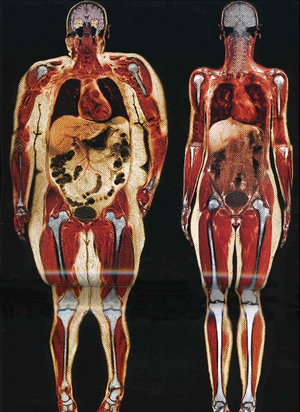
This Guy Definitely needs a blood laser
unit
|
Here are two people. The MRI
shows one that is a healthy weight and another
that is obese. Notice anything? My observations
include
1) the obese person's knees look ready to buckle
2) the obese person's heart has shifted to accommodate their
girth.
3) the obese person has lots of undigested food in their system.
It looks like a whole sausage is rotting in their colon.
4) the heart on the obese MRI looks like a fatty steak. It
has enlarged.
|
HDL cholesterol is a ‘good
cholesterol’ as it protects against heart
disease by helping remove excess cholesterol deposited
in the arteries. High levels seem to be associated
with low incidence of coronary heart disease.
Based on the food control, TC level
of the laser group dropped 5.8% (P=0.031),
and TG dropped 8.8%. And at the same time
the ALT level of the laser group dropped
23.1% (P=0.022), which meant that the laser
therapy could protect the liver function.
Low-intensity laser irradiation has
various bio-effect, present study showed
Intra-vascular Low lever Laser Irradiation
(ILLLI) has obvious therapeutic effects
on ischemic cardiac and cerebral vascular
diseases[1,2]. Base and clinical
research indicate that ILLLI can improve
hemorrheological properties, improve blood
circulation, especially microcirculation;
regulate immunity; enhance enzyme activity,
detoxify; this eliminate free radical,
restrain formation thrombus, enhance activity
of enzyme Na+-K+-ATP
in red cell membrane, raise level of SOD
(this enzyme can eliminate free radical),
which helps eliminate free radical, anti-old,
improve blood hyperkinesias; it can also
increase red cell metabolic ability, improve
hemorrheological properties, decrease blood
viscosity; regulate fibro-lysis and other
bio-effects[3-5]. More |
Triglyceride is fat in the blood
which, if elevated, has been associated with heart
disease, especially if over 500 mg. High triglycerides
are also associated with pancreatitis. Triglyceride
levels over 150 mg/dl may be associated with problems
other than heart disease. Ways to lower triglycerides:
1) weight reduction, if overweight; 2) reduce animal
fats in the diet: eat more fish; 3) take certain
medications your physician can prescribe; 4) get
regular aerobic exercise; 5) decrease alcohol and
sugar consumption—alcohol and sugar are not
fats, but the body can convert them into fats then
dump those fats into your blood stream 6) restrict
calories - carbohydrates are converted to triglycerides
when eaten to excess.
VLDL (very low density lipoprotein) is another
carrier of fat in the blood.

What Is Coronary
Artery Disease?
Coronary artery disease (CAD), also called coronary heart disease,
is a condition in which plaque (plak) builds up inside the coronary
arteries. These arteries supply your heart muscle with oxygen-rich
blood.
Plaque is made up of fat, cholesterol (ko-LES-ter-ol), calcium,
and other substances found in the blood. When plaque builds up
in the arteries, the condition is called atherosclerosis (ATH-er-o-skler-O-sis).
Plaque narrows the arteries and reduces blood flow to your heart
muscle. It also makes it more likely that blood clots will form
in your arteries. Blood clots can partially or completely block
blood flow
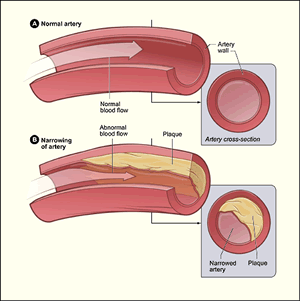
Artery Disease Begins
in Childhood
The study examined the arteries of young people
who died of other causes, such as suicide, homicides
and accidents.
One-fifth of the young men aged 30-34 already
had advanced plaques, or deposits of fat, inside
their coronary artery, pointing the way toward
future heart attacks and strokes. Males were more
than twice as likely to have the plaques than women
of the same age range.
The biggest risk factors for a clogged artery
were found to be obesity and a high level of low-density
lipoprotein or LDL, the so-called bad cholesterol
that forms deposits on artery walls. Those with
LDL levels above 160 milligrams per deciliter were
2 ½ times more likely to have one of these
advanced plaques.
Other risk factors, such as smoking, high blood
pressure, and having a low level of high-density
lipoprotein or HDL, known as the “good” cholesterol,
also put people at a slightly higher risk of artery
blockage. Source
|
Our semiconductor laser therapeutic
instrument has been developed based on modern
laser medicine and clinical practice.It adopts
low-level laser with the wavelength of 650nm,
through specific parts of irradiation and the
using light radiation of laser and wavelength
to change the biological characteristics and
peel off the fat layer and cholesterol wrapped
in the red blood cells, to improve the activity
and oxygen carrying capacity as well as the
deformability of cells, reduce the concentration
of middle molecules in the blood,improve hemrheological
properties and lower triglycerides and cholesterol
,in order to effectively treat and prevent
heart and brain diseases. |
Later
During the aging process the artery walls may
become weakened. Coronary artery disease occurs
when deposits of fatty material, cholesterol and
other substances form plaque that collects in the
thinned or weakened parts of the artery wall. The
plaque may then thicken and harden forming calcium
deposits that may eventually block the arteries
and restrict blood flow to the heart. This condition
is known as atherosclerosis or "hardening
of the arteries."
A blockage in an artery also increases the pressure
of blood pumping through the vessel causing high
blood pressure. Elevated blood pressure requires
the heart to work much harder to pump blood to
all body parts in need. Over time as the heart
is forced to work at unusually high levels, it
can become enlarged and lose its' ability to function.
High blood pressure is the number one risk factor
for heart disease and congestive heart failure,
a condition where the heart is no longer able to
pump enough blood to meet the demands of the body.
Symptoms
of Coronary Artery Disease
The most common symptom of coronary artery disease is angina,
or chest pain. Angina can be described as a discomfort, heaviness,
pressure, aching, burning, fullness, squeezing, or painful
feeling in your chest. It can be mistaken for indigestion or
heartburn. Angina is usually felt in the chest, but may also
be felt in the shoulders, arms, neck, throat, jaw, or back.
Other symptoms
of coronary artery disease
include:
Shortness of breath
Palpitations (irregular heart beats, skipped beats,
or a "flip-flop" feeling in your chest)
A faster heartbeat
Weakness or dizziness
Nausea
Sweating
Silent
heart attacks |
Discomfort,
pressure, heaviness, or pain
in the chest, arm, or below
the breastbone
Discomfort radiating to the back, jaw, throat, or arm
Fullness, indigestion, or choking feeling (may feel like
heartburn)
Sweating, nausea, vomiting, or dizziness
Extreme weakness, anxiety, or shortness of breath
Rapid or irregular heartbeats |
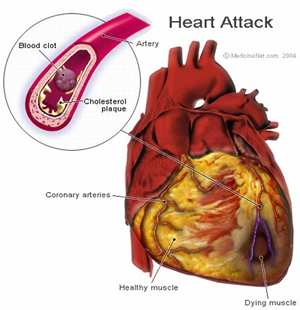 |
If an individual
is not treated within four
to six minutes from the onset
of Sudden Cardiac Arrest
(SCA), the results can be
fatal. An SCA can be corrected
via a shock from an external
defibrillator or an implantable
cardioverter defibrillator
(ICD).
|
Unfortunately, as the name suggests,
SCA usually occurs without any
warning. As many as 2/3’s
of people who have attacks have
no prior indication of heart
disease. However, there are some
symptoms that can help you identify
if someone has just had an SCA:
sudden collapse, loss of consciousness,
abnormal breathing, an inability
to find a pulse and loss of blood
pressure.
Test
your HDL Cholesterol |
Saturated
fats linked to Alzheimer's
By Wendy Zukerman for ABC Science
http://www.abc.net.au/news
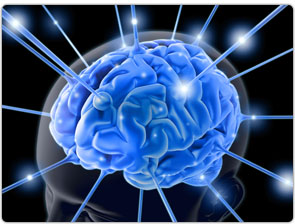
Posted Tue Sep 8, 2009 4:48pm AEST
The researchers found that saturated fats damage
the blood vessel lining, allowing amyloids to enter
the brain. (stock.xchg) More
According to the World Health Organisation,
depression is one of the most important diseases
in the world; 15% of individuals diagnosed
with severe depression end in suicide. This
is a very real problem that stems from many
places. The question I am asking is could diet
play a role in depression and suicide? Lets
take a look...
When you feel tired or down what do you
do? A Red Bull? A large cup of Starbucks?
What about a chocolate bar or a sugary
snack that instantly gives you a rush and
allows you to fight off that feeling of
being down. These give you a rush...make
you feel more alert and make you feel better
and ready to continue with your day. When
you eat sugar and carbohydrates your blood
sugar rises and a rush is felt. When you
eat carbohydrates the body releases serotonin
and this effects the brain and can alter
your mood. Serotonin has been linked to
an exhausting list of conditions, including
depression, autism, eating disorders, schizophrenia,
obsessive/compulsive disorder, premenstrual
syndrome, anxiety, panic disorder, seasonal
affective disorder, extreme violence, hostility
and aggression, suicide, migraine, manic
depression and addiction. . |
CANCER
Clinical studies have found a relationship between
excess body fat and the incidence of cancer. By
itself, body fat is thought to be a storage place
for carcinogens (cancer-causing chemicals) in both
men and women. In women, excess body fat has been
linked to a higher rate of breast and uterine cancer;
in men, the threat comes from colon and prostate
cancer.
Excess Body Fat
Causes Cancer
The World Cancer Research Fund (WCRF) report is
the most comprehensive ever published on the link
between cancer and diet, physical activity and
weight. Searches at nine academic institutions
across the world for studies published since records
began in the 1960s initially found half a million
- 7,000 of which were judged to be the most relevant
and robust for inclusion in the report.
It includes 10 recommendations from a panel of
21 world-renowned scientists that represent the
most definitive and authoritative advice that has
ever been available on how the general public can
prevent cancer. Unicef and the World Health Organization
were among the official observers of the report's
process.
And its key finding is that maintaining a healthy
weight (a BMI of 20-25) is one of the most important
things you can do to prevent cancer. The number
of types of cancer where there is "convincing" evidence
that body fat is a cause has risen from one to
six since the last WCRF report was published in
1997, including colorectal cancer and post-menopausal
breast cancer.
Prof Sir Michael Marmot, Chair of the Panel, said: "We
are recommending that people aim to be as lean
as possible within the healthy range, and that
they avoid weight gain throughout adulthood.
"This might sound difficult, but this is
what the science is telling us more clearly than
ever before. The fact is that putting on weight
can increase your cancer risk, even if you are
still within the healthy range.
"So the best advice for cancer prevention
is to avoid weight gain, and if you are already
overweight then you should aim to lose weight."
Other findings in the report include:
There is "convincing" evidence that
processed meats, including ham and bacon, increase
the risk of colorectal cancer. People who consume
them are advised to do so sparingly.
The evidence that red meat is a cause of colorectal
cancer is stronger than ever before. People should
not eat any more than 500g of red meat a week.
This figure is for cooked meat, and is the equivalent
of between 700 and 750g of non-cooked meat.
In one of the first times a cancer report has
made a breastfeeding recommendation, mothers are
advised to breastfeed exclusively for six months
and to continue with complementary breastfeeding
after that. This is because of "convincing" evidence
that breastfeeding protects the mother against
breast cancer and "probable" evidence
that it protects the child against obesity later
in life. Source
The treatment principle of the laser therapy instrument
for hyperlipemia is to irradiate the nasal cavity
with low intensity laser whose wavelength is 650nm,
after the laser energy is absorbed by the capillary
vessels in the nasal cavity, it can alter the gathering
ability of the thrombocyte and erythrocyte, improve
the oxygen-carrying capacity of the erythrocyte,
restore the original negative charge carried by
the erythrocyte, increase the repulsive force between
them, separate the erythrocyte that gather into
block, improve the morphotropy and liquidity of
the erythrocyte, and thus decrease the erythrocyte
sedimentation, blood viscosity and plasma viscosity.
It can activate the various enzymes in the blood through the photochemical
action, such as the lipoprotein enzyme, transferase for lecithin
and cholesterol, acyltransferase and superoxide dismutase (SOD);,
and thus dissolve and decompound the plethoric lipid in the blood,
promote the fall of the blood fat, enhance the oxidation resistance
of the body, decrease the peroxidation of the lipid, and maintain
the metabolic balance of the fat in the body.
NOW
YOU CAN LOWER YOUR BLOOD FATS
Every once in a while a technology
is introduced that transforms the landscape of
health care. Low Level Laser Therapy is a perfect
example of such a development. It is well accepted,
painless and, bottom line, it gets results.
The
Blood laser system applies low-intensity
laser with the wavelength of 650nm to irradiate
the nasal cavity and inject monochromatic photons
of low-intensity into blood to increase the amount
of enzymes in your blood for dissolving the fat
layers and cholesterol, such as lipoproteinase,
cholesterol transferase etc. After the fat layer
wrapping around the erythrocyte is shucked off
,the uptake ability of the erythrocyte is recovered
and the oxygen-carrying function is improved.
Meanwhile, the negative charges on the erythrocyte
surface are recovered because the surface layer
wrapping around the erythrocyte is shucked off,
which makes the increases repuls force between
each two erythrocytes .
To
explore the effects of low-intensity laser nasal
irradiation (650nm/5mW) on dyslipedemia.
Low level laser therapy has been
shown to treat a wide range of disorders which,
at first, seem to have nothing or very little in
common.
For example, LLLT can accelerate wound and burn healing, reduce
pain in different limbs all over the body, improve the condition
of patients after a stroke, help in treatment of diabetic angiopathy,
and reduce stiffness and inflammation.
Assistant
Treatment on Craniocerebral Injury
Outside the cell, ATP has been found to act as
a neurotransmitter. ATP receptors are widespread
through the body. On its own it is known to have
effects in the arteries, intestines, lungs, and
bladder. It is also often released in tandem with
other neurotransmitters, perhaps to add chemical
stability.
Low-intensity radiation in the red and infrared
spectral ranges induces certain changes in the
body,these play an important role in achieving
the clinical therapeutic effects of this device.
The most important of these effects is improved blood micro-circulation
, which further enhances the therapeutic effect of the low-level
laser therapy device. The biological effect is due to the dilating
of small blood vessels, a decrease in the adhesive ability of blood
cells, and aiding in the formation of new micro-vessels.
In addition, low-intensity radiation has a positive
influence on the quantity and quality of the immune
system, leading to increased destruction of bacteria.
Study
of the Therapy Effects of Low-Intensity Laser
Nasal Radiation on Dyslipedemia
Vital Laser + Green Therapeutics=Pure Blood!
Laser, is the “the most pure” energy that does not
depend on any materials to enters the human body.
The “low strength laser therapy" is praised as a “21st
centuries green therapy" by the international
medical science field. Laser can produce efficacy in live organize
spread of process, such as
the light effect, hot effect, the living creature stimulates effect,
strong electromagnetism effect, etc.,
and induce the answer responds of body, and no vestiges, no side
effect. Another unique
feature of Laser is that can heal pathological tissue, with no
side effect to normal tissue.
Prevent
Thrombosis
Light illuminating to blood can reduce angiotensin,
increase diastole in, decrease the content of thrombosis
material, and effectively prevent thrombus disease
of heart and brain such as cerebral stroke, cerebral
infarction, myocardial infarction and arteriosclerosis.

Lower Blood Pressure
Concentrating photons on blood can lower blood
viscosity to ameliorate the conglomeration of red
blood cells and platelets, then to decrease circumferential
resistance as a result. In addition, to lower blood
fat, improve vascular elasticity, restore hypertension,
release cardiac burden and balance blood pressure.
Ameliorate Clinical
Symptoms
Light illuminating to blood can ameliorate the
symptoms of headache, dizziness, stifle, shortness
of breath, amnesia, and fatigue caused by high
blood viscidity and high blood fat, because semiconductor
laser light can ameliorate the blood circulation,
increase the decomposing of fat - protein, decrease
the peripheral obstruction, lysis the whole body
symptoms and improve endurance.
1.
Who is suitable to use the Laser Blood Cleaner?
Laser Blood Cleaner has been approved by the State Food
and Drug Administration, P.R. China to be used in the
health care, healing, and helping heart and brain vessel irregularities.
Laser Blood Cleaner has a significant effect
on high blood viscosity in animal experiments,
high cholesterol, and high triglyceride. Proved
by clinical practices, it also has a remarkable
effect on symptoms such as insomnia, headache,
dizziness, eyesight , cold limbs, etc due to high
blood sugar, hypertension and anemic heart and
brain blood vessel problems. What's more, it may
also have a cosmetic function while reducing the
blood fat, blood viscosity and cleaning up the
toxins.
2.Is there any
side effects caused by using the Laser Blood
Cleaner?
No. The Laser Hematic uses a
particular laser of 650nm wavelength. The wave
can penetrate the tissues of the human skin,
fat, muscle, blood vessel wall, etc but results
in no harm to the cells of the human tissues.
The 650nm laser light belongs to low energy laser lights and has
a power density of irradiation far below the damage liminal value
of the human body and blood. The human body will be free of harm
during the laser irradiation from outside of the blood vessels.
Always stay in contact with your health care provider...
3. Why use 650nm
laser light for irradiation from outside of
the blood vessels?
The human tissues mainly consist
of water, hemoglobin and melanin. The laser
light that has least heat loss and injury
effect to the live cells is called "Window
to the Human Body. The most recent laser
medical science indicates that while irradiating
the 650nm laser perpendicularly on the
mucous membrane of the nasal cavity, an
approximate of 10% of the laser energy
will go through the skin, muscle and the
blood vessel wall, and then being absorbed
by the blood. The range of the fluorescence
excited by laser is 600-670nm and using
a 630-650nm-peak value laser wavelength
will achieve a best effect.
4. Why select mucous
membrane for irradiation?
Mucous membrane separates the
blood vessel net of the nasal cavity from the outside
world. Also it has a consistant and abundant blood
flow .
5.Please while using
the Laser Blood Cleaner?
Standard considerations
1.Not suitable for
cancer patients.
2.Not
suitable for pregnant women.
3.Keep
away from eyes while using the instrument.
4.Not
suitable for patients of hemorrhagic diseases.
What do people
notice?
Different people have different
sensitivities, so the degree of improvement
is also different. The treatment principle
of the Laser Blood Cleaner is to improve
the blood,and improve the metabolism.
Possible reasons
why improvements do not last?
1. Ensure Nasal cavity is clean,This
prevents disruption of the laser.
2. Maintain good habits. As awareness of Drinking Smoking and Diet
3. During the treatment period, when the body achieves a kind of
balance, the effect is not alway obvious, one should use as health
care provider suggests.
Even our Youth
Have Clogged Arteries
WASHINGTON (Reuters) - Many U.S. teenagers
already have arteries clogged so badly they
could suffer heart attacks, and 20 percent
of men under the age of 34 do, too, a study
published on Tuesday suggests.
Researchers looked at the arteries of teens
and young adults who died in accidents, suicide
or murder and were amazed to discover that
many were already badly clogged.
``Most people think of
heart disease as an adult disease,'' Dr.
Arthur Zieske, a pathologist
at Louisiana State University who worked
on the study, said in a statement.
``But what we have found is it affects young
people -- very young people -- too.''
The researchers looked at 760 coronary
arteries for their study, published in
the American
Heart Association journal Circulation.
They found 2 percent of males aged 15
to 19 and 20 percent of men aged between
30 and 34
had advanced plaques, which are the blockages
considered most likely to break off and
cause a heart attack or stroke.
They did not find advanced plaques in
girls aged 15 to 19, but did find them
in eight 8
percent of the women aged 30 to 34.
``If our results hold true for larger
populations, one in five men between
the ages of 30 and
34 has some significant damage to his
heart arteries that has probably developed
over the
past 20 years due to one or more risk
factors for heart disease,'' Dr. Henry
McGill of the
Southwest Foundation for Biomedical Research
in San Antonio, Texas, |
8. Can this be
used for reducing fat?
There is no experiment in clinical studies, but from the theory,
the answer is yes. Because the Laser Blood Cleaner can reduce the
blood fat, blood viscosity rates and the reduction of toxins.
9. How long does
the blood fat, blood viscosity rate and blood
sugar lower?
1. Improvement has been noted in blood viscosity rates after about
30 minutes use. . But, because of individual differences, some
people need different period of treatment .
2. The blood fat general treatment is 7-30 days, .
3. For blood sugar ( mainly type II diabetes), general about 30
days before improvement appears , but this can vary.
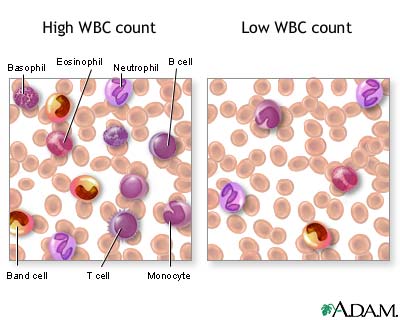
10.Is there any
change of WBC and the blood platelet after
treatment?
The wave can penetrate the tissues of the human skin, fat, muscle,
blood vessel wall, etc but results in no harm to the cells of the
human tissues, because the power of laser density is smaller than
the organism and the blood damage threshold value. When the blood
platelet gathers, laser illumination can reduce blood platelet
gathering, but certainly cannot reduce the quantity of the blood
platelet.The use of this unit may increase the white blood cells
abilty to function, thus possibly improving the organism immunity.
Does blood pressure
rise after treatment?
After treatment, because blood viscosity rates reduce, the blood
circulation increases, the status is same with as a person who
has just finished a long distance run, its is normal for blood
preasure to increase after use,,should blood pressure remain high
2 hours after use,,contact your health care professional....
The new health ticking timebomb: Young
adults who are ‘picture of health’ at
risk of clogged arteries
Expert says true figure
of those affected is 'staggering'
Secret killer in artery walls can lead to stroke
and premature death, says new study
A high proportion of 'apparently healthy'
young adults are at risk of clogged arteries,
a study shows.
Researchers at the University of Quebec
have discovered that a build-up of fatty
deposits in the walls of the arteries known
as atherosclerosis, is fast becoming a
'ticking timebomb'.
The disorder, which often remains undetected,
can eventually lead to serious health complications
including heart disease, stroke, or even
premature death. Source |
13. Why did insomnia change
for the better but in some people it seemed worse, ?
Because of individual physique difference, some patterns of sleep
may vary after the treatment for the better, but also some peoples
sleep time actually shortens, but the majority of people reflect
although sleep time is shorter than before, sleep quality is actually
better , so they do not feel tired the next day.
Why some person
will feel flustered after treatment?
If a persons heart has some problems,
, the combinative oxygen of RBC will be
increase. The supply of Oxygen in the body
is improved at the same time, and the bloodstream
becomes more free flowing, the heart rate
increases, So we suggest that the treatment
should begin at low power, and a short
time at the beginning, this gives the body
a period of time to adapt. After the body
adapts, those symptom will possibly disappear
gradually, then you can increase the laser's
power and irradiating time. If after a
period of time the person's body still
has not adapted then he should stop using
this device.
The life of the laser tube is well above tens
thousands hours,
The product's guarantee period is one year,
Method:
1. Keep nasal cavity clean and dry.
2. Choose and cover the nose inserter with the suitable cap, then
insert it into nasal cavity, nose is nipped by the nose clamp,
keeping the laser focus in the center of nose bridge, turning on
the power, it will irradiate according to the procedure automatically.
3. The treatment lasts 30 minutes, with 15 min for each side of
the nasal cavity. There is buzzing sound after the first 15 min,
change the inserter into the other nasal cavity. There is buzzing
sound at the end of the 30 min treatment, the laser output will
be shut off automatically.
4. After treatment, clean the nose inserter, and put the complete
unit into the container for protection and safety.
Treatment: high blood fat, high blood
glutinosity, hypertension, coronary heart
problems, angina, myocardial infarction,
atheroma, etc.
Recovering: the sequelas of cardiovascular & cerebrovascular
diseases, such as, aphemia, hemiplegia, anaesthesia, etc.
Improvement: headache, dizzy , heart-throb,breathe hard,
weak, etc.
Modulation: endocrinopathy, such as, diabetes, etc.
Diseases of nervous system and endocrine
system: Diseases of respiratory system:
allergic rhinitis, pneumal infection, etc
Diseases of digestive system: gastric ulcer, chronic gastroenteritis,
Parasites etc
In addition, low-intensity radiation
has a positive influence on the quantity
and quality of the immune system, leading
to increased destruction of bacteria.
Laser
Irradation of the blood |
Please
help, share this Newsletter to family and friends.
Laser
1)Improve
blood viscosity through laser blood irradiation
2)Improve blood oxygen carrying capacity
through laser blood irradiation
3)Reduce blood-fat and total cholesterol
through laser blood irradiation
4)Quickly and effectively correct the abnormal
lipid metabolism and maintain balanced
levels of the lipid metabolism in the human
body through laser blood irradiation.
5)Improve the partial blood circulation
around the nasal cavities and help functioning
of the nasal mucosa membranes through irradiation
of the
nasal cavities
6)Therapeutic efficacy control on ischemic
cardio-cerebrovascular diseases.
Is
this A Laser version of the Bob Beck System
?
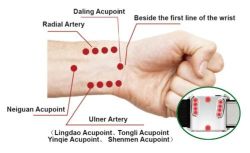 |
1. First
Option: Wear the laser watch
Blood Cleansing
Parasite and Mold elimination
Wear the main machine
on the inner side of the left wrist,
as shown in the diagram, so as to ensure
the laser irradiates radial artery
and neiguan acupoint precisely; and
then fasten the wrist strap. |
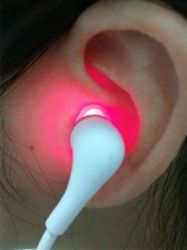 |
2. Second Option:: Use the ear probe
Wear the ear probe in the ear, insert
the Ear probe accessory in the topside
accessory plug of laser watch,
Very good for helping with Tinnitus
|
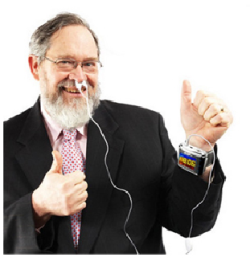 |
3. Third Option:: Nasal probe
Blood Cleansing
When changing tratement from ear, to
nose The nasal probe uses the same accessory
output plug as the ear probe.
avoid eye contact of laser. |
| |
|
Red
and Blue Laser
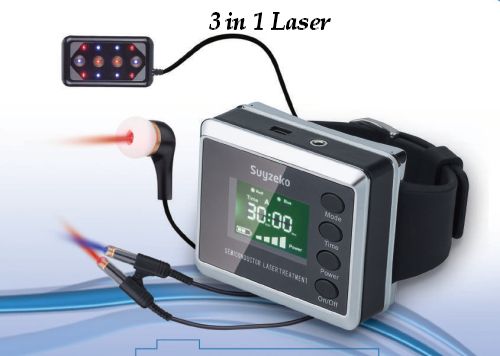
|
|

For general use, they
suggested 30min Two to three times
a day. (Wear only ON left wrist)
Power source use Lithium
battery with capacity of 1600mah plus
Charger
|

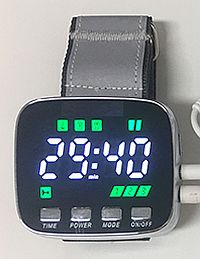 |
Four
Color 10 Beam 3 in 1 Wrist Laser
Power source Lithium
battery
Laser
probe for Ear 650nm
laser diode Max 5mW for each
laser diode
Laser
probe for nose 650nm
laser diode Max 5mW for each
laser diode
Laser
for wrist 650nm laser
diode (Red, plus Blue, Green, Yellow
laser)
USB charging cable
Instruction manual

|
|
|

